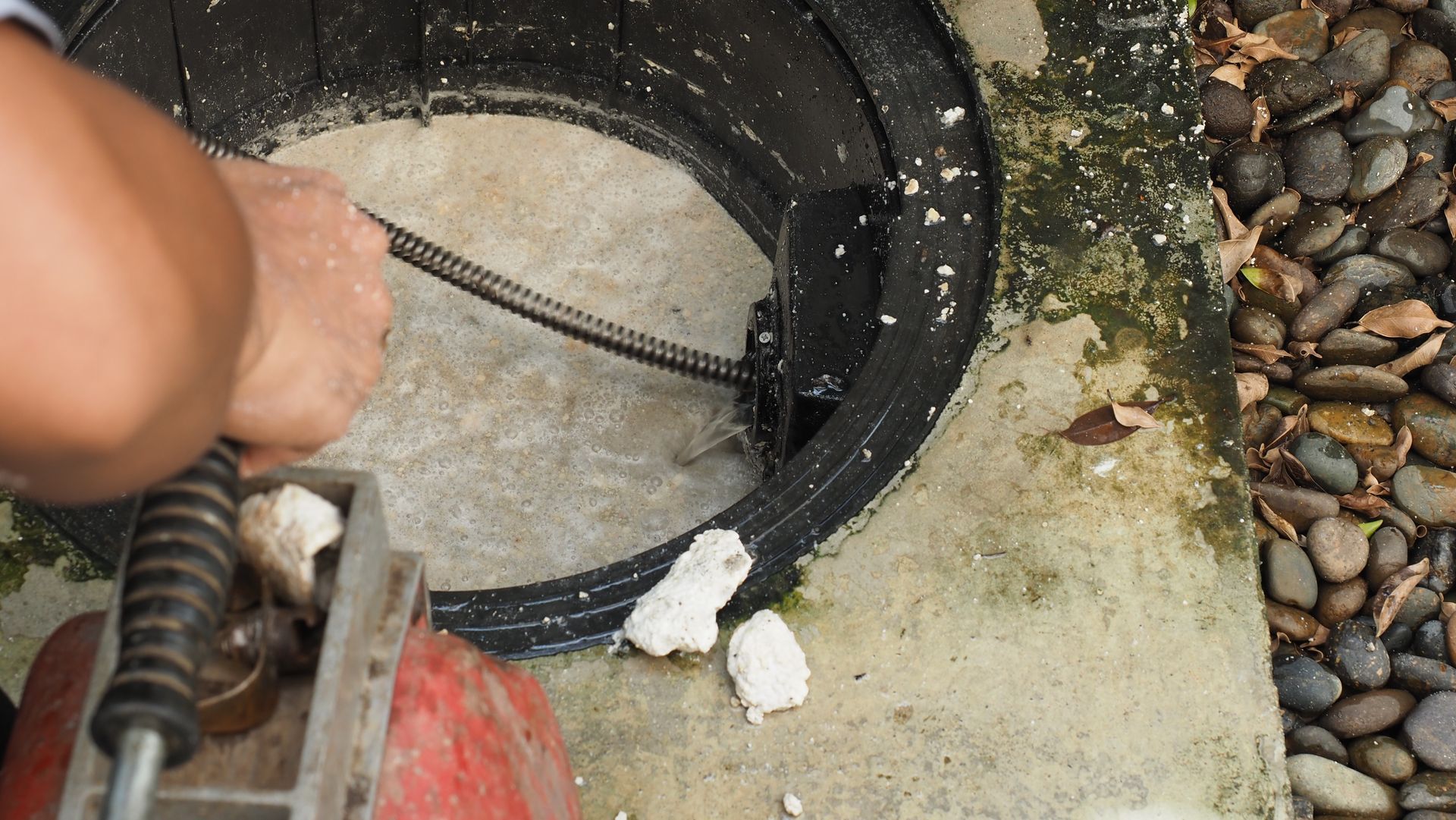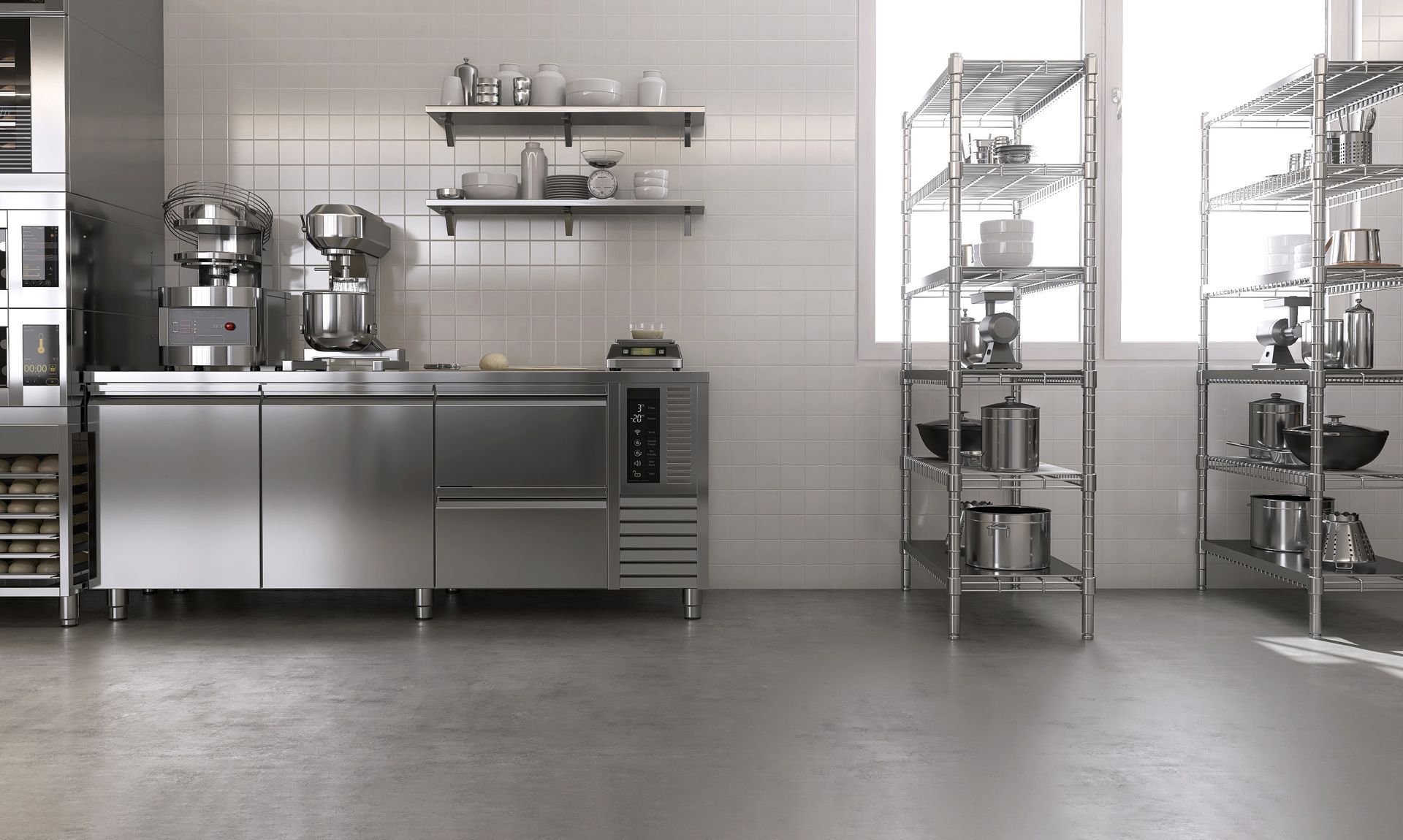Should Businesses Use Jetting or Snaking to Clear Commercial Kitchen Drains That Lead to Interceptors?

Commercial kitchens depend on their plumbing staying clear and functional. When a drain leading to a grease interceptor clogs, it disrupts operations, increases the risk of health code violations and can even damage equipment.
Businesses faced with blocked lines often consider two primary methods to restore flow: mechanical cable snaking and high-pressure water jetting. Each has its place, but choosing the right approach depends on the nature of the clog, the condition of the plumbing and how the drain ties into the interceptor system.
Defining the Methods
- Snaking:
Relies on a rotating steel cable with a cutting or boring head. As the cable moves through the line, it breaks up soft blockages or punches a hole through the obstruction, allowing water to drain. It’s a straightforward approach that’s been used in commercial and residential plumbing for decades.
- Jetting: Uses high-pressure water streams delivered through a specialized hose and nozzle. The water scours the inside of the pipe, cutting through grease, food solids and other buildup while flushing loosened material downstream. The result is a more thorough cleaning of the pipe walls compared to snaking, which usually only restores a partial opening.
When Snaking Makes Sense
Snaking isn’t obsolete, but it is best suited for certain conditions in commercial kitchens:
- Soft blockages near a fixture:
Clumps of pasta or a wad of paper towels lodged close to a sink or floor drain can often be cleared quickly with a cable machine.
- Fragile or aging pipes: Older cast iron pipes may not handle the stress of high-pressure jetting. Snaking offers a less aggressive alternative that avoids cracking already compromised pipe walls.
- No cleanout access: Jetting typically requires a cleanout to insert the hose and nozzle. When no access point exists and only fixture drains are available, snaking is the practical option.
For kitchens with older piping or isolated clogs, snaking is a reasonable first step. The downside is that it often leaves behind grease residue on pipe walls, which can quickly lead to repeat blockages.
When Jetting is the Better Choice
Jetting excels when drains are experiencing issues that go beyond a one-time obstruction:
- Heavy FOG buildup:
Fats, oils and grease congeal inside pipes and coat the walls, gradually choking off flow. Jetting strips this residue away and restores full diameter.
- Long drain runs:
Restaurants with interceptors set far from the kitchen often have long horizontal lines where debris can accumulate. Jetting reaches these areas more effectively than snaking.
- Recurring backups:
If the same drain clogs multiple times, it’s usually a sign of grease or sludge buildup. Jetting addresses the underlying issue rather than just punching another hole.
- Biofilm removal: Food particles and bacteria can form sticky biofilms on pipe walls. Jetting scours these surfaces clean, helping reduce odors and sanitation risks.
By thoroughly cleaning lines, jetting helps protect interceptors from being overloaded with grease and solids, which reduces maintenance issues downstream.
Pipe and Access Considerations
The decision between snaking and jetting also depends on pipe characteristics and layout:
- Diameter:
Larger pipes benefit more from jetting, which can clean wall-to-wall, while snaking tends to carve a small opening through the center.
- Material:
PVC and newer cast iron can typically withstand jetting, but severely corroded cast iron may require caution.
- Cleanout access:
Without a cleanout, jetting may not be feasible unless a plumber installs one.
- Proximity to trap and venting: Jetting near grease traps can push debris directly into the interceptor, which may create temporary overloads. Proper venting also matters to avoid splashback during cleaning.
Risks to Consider
Neither method is without drawbacks. With snaking, the main risk is simply ineffectiveness; it may punch through grease, but it often pushes material downstream where it collects again, closer to the interceptor.
Jetting, while more thorough, carries its own concerns:
- Pushing grease downstream: If interceptors are not maintained, a sudden rush of grease-laden water can overwhelm the system.
- Line damage:
Excessive water pressure can damage weakened pipes.
- Splash contamination:
If venting or cleanouts are not sealed properly, jetting can cause unsanitary water to splash back into the kitchen.
- Noise and disruption: Jetting equipment is loud and may interrupt service during peak hours.
Schedule Grease Trap Maintenance to Occur After Jetting
Whether a business chooses to snake or jet a line, the drain ultimately leads to the grease interceptor. If the interceptor is neglected, even the most advanced jetting won’t prevent backups for long. Interceptors filled beyond capacity allow grease to pass through and accumulate in lines, creating a cycle of recurring clogs. Routine professional servicing keeps interceptors functioning properly and ensures that cleaning efforts upstream are not wasted.
Schedule Dependable Grease Trap Service in the Atlanta Area
Snaking and jetting are valuable tools for restoring flow in commercial kitchen drains, but neither is a substitute for consistent grease trap maintenance. Southern Green Industries provides dependable grease trap cleaning and servicing across Atlanta to keep grease traps and interceptors working the way they should.
Protect your kitchen from costly downtime and repeat clogs by scheduling regular service. Call Southern Green Industries today at (404) 419-6887 to keep your operation running smoothly.
Recent Blog Posts
Contact us Today for a FREE Quote
We are committed to making grease trap cleaning and fryer oil recycling as clean and easy as possible. If you’d like to learn more about our services or get a quote, give us a call at (404) 419-6887.



